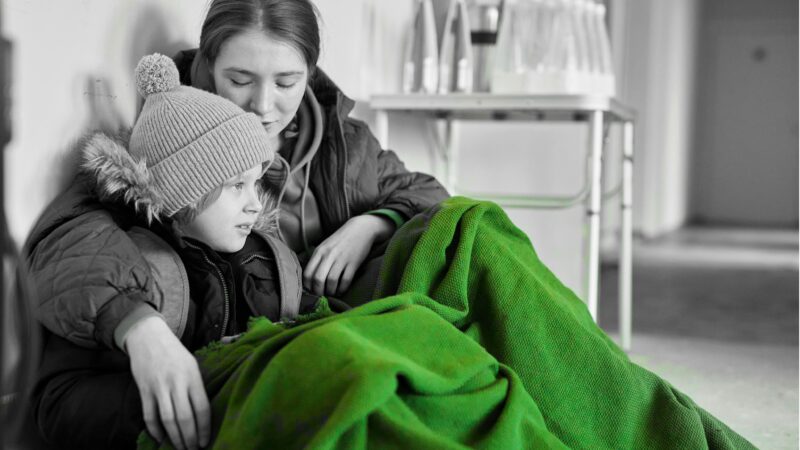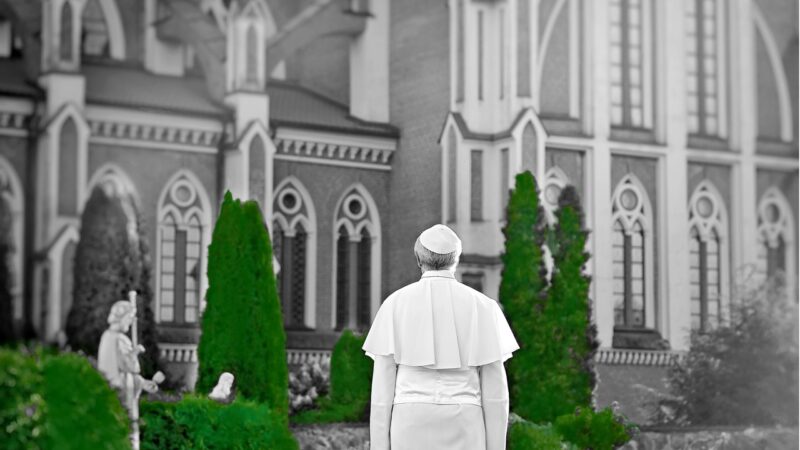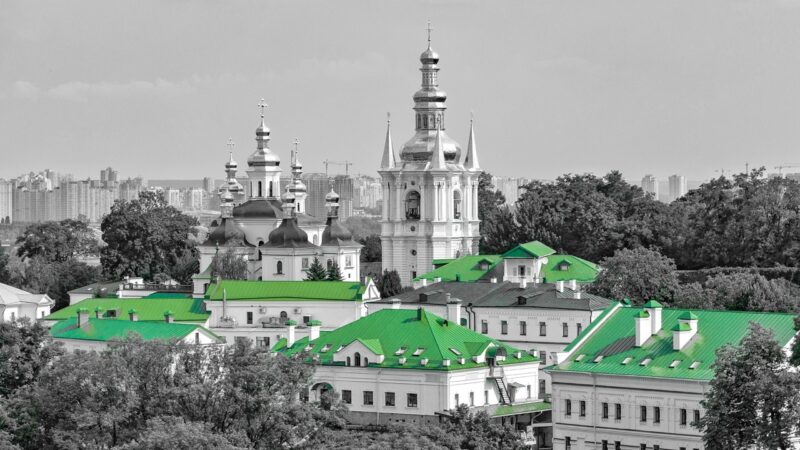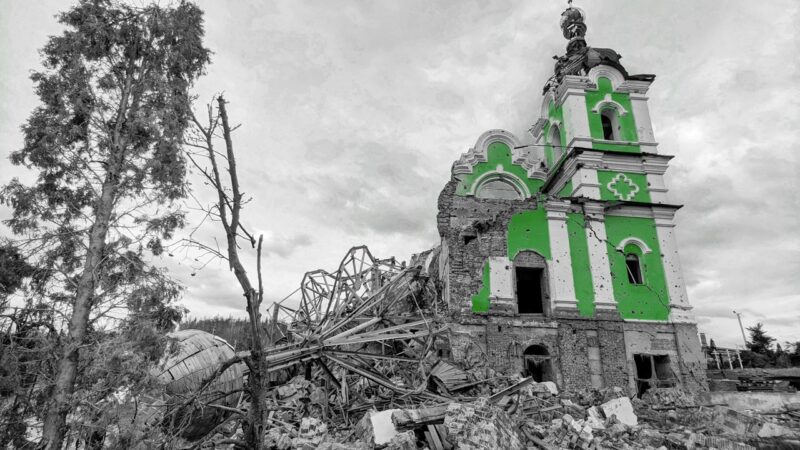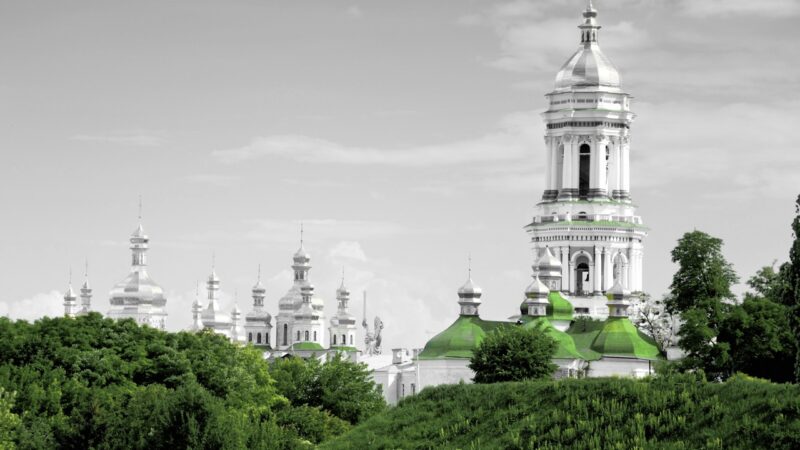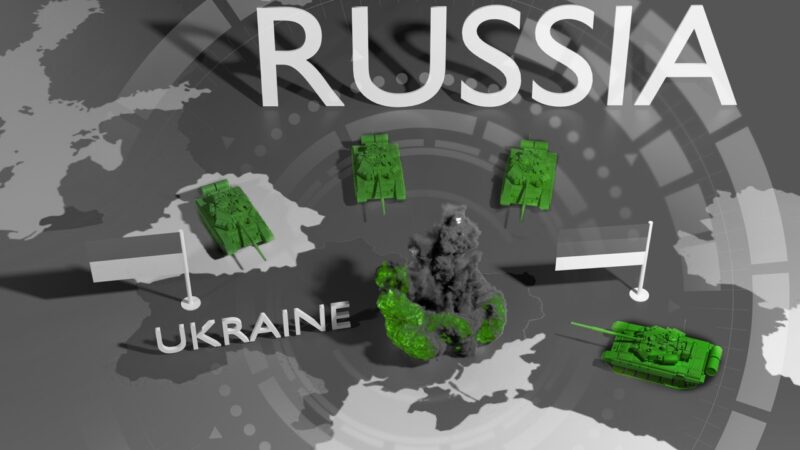Myroslav Yurkevich: “Ukrainian Studies and the Western Scholarly Mainstream”

Myroslav Yurkevich is senior editor of the Canadian Institute of Ukrainian Studies Press and has participated in the Hrushevsky Translation Project at CIUS since its inception. A former editor of the Journal of Ukrainian Studies, he has also translated academic articles and government documents.
Oleksandr Pankieiev: Please tell us what led to your current role at CIUS.
Myroslav Yurkevich: I studied Russian and East European history at the universities of Toronto and Michigan, and then worked for a year at the CIUS Toronto office, editing articles for the Encyclopedia of Ukraine. In 1982, when CIUS was looking for two research associates, I applied and got one of those positions. I became deeply involved in editing CIUS publications and decided that I wanted to concentrate on that aspect of the institute’s work. I got the chance to do so in 1989, when CIUS Press was established as a separate unit of the institute. I was its director until 1992, when Maxim Tarnawsky (University of Toronto) took over, and institute business took me to Kyiv for a year. I then returned to work as senior editor at CIUS Press.
Oleksandr Pankieiev: What did you do in Kyiv in the early 1990s?
Myroslav Yurkevich: Clearly, our job was to tell the world about Ukraine in the world’s lingua franca, but CIUS also received good manuscript submissions in Ukrainian. Once Ukraine became independent, it was obvious that they could best be formatted and published there. I spent a year, in 1992–93, living in Kyiv and, thanks to connections with the previous CIUS director, Bohdan Krawchenko, and Hennadii Boriak at the Institute of Ukrainian Archaeography, I was able to organize work on our initial Ukrainian-language publications. These included a sociological study of national consciousness among Ukrainian students, an atlas of Ukrainians in the eastern (Russian) diaspora, and a study on the formation of Ukraine’s modern borders.
After I left in September 1993, my work was carried on by two young historians, Heorhii Kasianov and Oleksandr Pavliuk, while I managed the projects from Edmonton. In the course of the 1990s, we brought out 17 publications, including a two-volume collection of the historical essays of Ivan Lysiak-Rudnytsky; Israel Kleiner’s book about Vladimir Jabotinsky and the Ukrainian question; a Ukrainian translation of Zenon Kohut’s study of the Cossack Hetmanate and its absorption into the Russian Empire; and memoirs by the head of the Ukrainian Helsinki Group, Mykola Rudenko; the literary historian Hryhorii Kostiuk (the second of two volumes); and Kyrylo Tryliovsky, who headed the Sich movement in Galicia before World War I.
In the course of the 1990s, state-controlled publishing in Ukraine gave way to private enterprise, making Ukrainian-language publishing by CIUS Press superfluous. Nevertheless, the institute continues to subsidize the publication of scholarly works in Ukraine (authors and publishers apply for publication grants from CIUS).
Heorhii Kasianov went on to head the department of contemporary history and politics at the Institute of History, National Academy of Sciences of Ukraine, and taught history at the Kyiv Mohyla Academy. Oleksandr Pavliuk worked for about a decade in Vienna at the Organization for Security and Cooperation in Europe and is now with the Council of Europe.
Oleksandr Pankieiev: Tell us about your work on the Historical Dictionary of Ukraine. What was the main motivation for this collaborative project?
Scarecrow Press, which is based just outside Washington, is a major American publisher of reference works, although you wouldn’t guess that from the name. They have a series of historical dictionaries about many countries of the world that are available in many libraries. Each dictionary covers the history of a particular country in articles about prominent historical events and personalities and about major aspects of society—economy, political parties, law, education, the arts, and so on. The dictionaries also feature comprehensive English-language bibliographies and historical chronologies.
In the late 1990s Jon Woronoff, the editor of the historical dictionaries series, turned to CIUS with a request to prepare such a volume about Ukraine. Zenon Kohut, who was then director of the institute, and I thought it important that Ukraine be represented in such a widely distributed series. Also, there was no English-language volume of that type available about Ukraine. We signed a contract and set to work, very ably assisted by Lada Hornjatkevyč, then a graduate student in literature at the University of Alberta. Later we were joined by Bohdan Nebesio, a specialist in Ukrainian film, who prepared articles on various aspects of Ukrainian culture. He’s now at Brock University in St. Catharines, Ontario, Canada. The timing of the publication was perfect—it came out shortly after the Orange Revolution, when a great deal of attention was focused on Ukraine. The book got good reviews, and it was issued in a revised and updated edition in 2013.
Oleksandr Pankieiev: How do you see the concept of CIUS and its goals?
Myroslav Yurkevich: It’s important to consider CIUS not in isolation but in relation to other diaspora initiatives of the 1970s. By that time, Ukrainian studies were being carried on in North America, but on a small scale. The establishment of the Ukrainian Research Institute at Harvard in 1973 and of CIUS in 1976 was a major step forward.
Let’s recall the political situation prevailing at that time, which was by no means favorable to Ukraine. In the early 1950s George Kennan, the eminent American diplomat and historian, had asserted that “the” Ukraine (as it was known at the time in English—a region, not a country, like “the Lebanon” or “the Argentine”) was as economically integrated into the Soviet Union as the state of Pennsylvania into the United States, and close political integration could be presumed to follow from that. His view was still the conventional wisdom in the West in the 1970s. More important, the Soviet leadership maintained at the time that the nationality question in the USSR had been resolved for good. The new Soviet constitution of 1977 spoke of sblizhenie i sliianie—the drawing together and merging of all the nations of the USSR to form a new historical community, the Soviet people.
So the noose was tightening around Ukraine: recall that in 1972 Petro Shelest was removed as first secretary of the Communist Party of Ukraine because he was perceived to be too assertive of Ukraine’s interests. His dismissal was accompanied by a wave of arrests of Ukrainian political dissidents and a purge of Ukrainian institutions.
Given that situation, it was imperative to gain a place for Ukrainian studies in the English-speaking academy; hence the founding of the two institutes, followed by the establishment of Ukrainian studies chairs and courses in other Western academic centers.
The publications of the two institutes, as well as their two academic journals, had an impact on the study of Ukraine in the West, but we were still rowing against the current. The announcement of perestroika was followed by much adulation of Mikhail Gorbachev, and the dominant view in the West was that the Soviet Union should stay together.
What changed the situation was, of course, Ukraine’s unexpected attainment of independence. Once Ukraine became a sovereign country, Western interest in it steadily increased. Over the past quarter century we’ve seen Ukrainian studies enter the academic mainstream—the principal goal that the two institutes were established to achieve—although we have mainly earth-shaking political developments, not scholarly ones, to thank for its achievement.
Previously, since about 1960, the University of Toronto Press had begun publishing in the field of Ukrainian studies, mainly in response to demand from the Ukrainian community, and it still continues to do so. But in that regard the UTP was unique among academic presses in the English-speaking world: others might publish one or two titles in that field, no more.
In the past quarter century we’ve seen Oxford and Cambridge, Harvard, Yale, Princeton, and Stanford publish books in our field; other academic presses have done so as well. They have been followed by new or lesser-known trade publishers such as Glagoslav, which has a series of Ukrainian fiction in English translation; AmazonCrossing, which has issued works by Oksana Zabuzhko; and Červená Barva Press in the Boston area, which publishes Alexander Motyl’s novels on Ukrainian subjects.
It’s also important to note that for decades now, we’ve had non-Ukrainian scholars making significant contributions to Ukrainian studies, which was very much the exception in the pre-independence period. We can start by mentioning David Marples, who began his professional career at CIUS and was closely associated with the institute until very recently as director of the Stasiuk Program for the Study of Contemporary Ukraine. I’d like to mention several others by way of example:
– Timothy Snyder (Yale University), who has studied the Polish-Ukrainian conflict of the interwar period and the Second World War. Ukraine figures centrally in his bestselling Bloodlands, and he has been a frequent commentator on Ukrainian affairs in the New York Review of Books and elsewhere, especially since the start of Russia’s hybrid war against Ukraine.
– Hiroaki Kuromiya (Indiana University), who has studied the history of the Donbas.
– Andrew Wilson (University College, London), who has written extensively about recent Ukrainian politics.
– Andreas Kappeler (University of Vienna), a major historian of the Russian Empire who has often written on Ukrainian subjects.
– Michael Moser (University of Vienna), a specialist in Slavic linguistics and an authority on the Ukrainian language. This year CIUS Press will publish a collection of his recent articles.
– Yohanan Petrovsky-Shtern (Northwestern University), a specialist on Jewish history in Ukraine who has broken much new ground on that subject.
Oleksandr Pankieiev: Where do you see the work of the institute going in the next five to ten years?
Myroslav Yurkevich: Given the breakthrough of Ukrainian studies into the academic mainstream and the current generational change of the institute’s staff, I expect CIUS to evolve into something close to a think tank and research center, with less emphasis on in-house publications, since there’s no lack of places to publish. Perhaps there will also be a greater diversity of specialists at the institute—not only historians and political scientists, but also economists, sociologists, demographers. Ukraine produces and will continue to produce all kinds of studies about itself, but they’re written in Ukrainian or Russian. What’s needed in the West is a community of specialists who can write about such subjects in English.
A niche that CIUS might try to occupy is the translation of good books appearing in Ukraine. For example, Mykhailo Hrushevsky’s ten-volume history of Ukraine stops in 1659, but Cossackdom went on for well over a century afterward. Ten years ago, a comprehensive two-volume history of Ukrainian Cossackdom, with contributions by many specialists, was published by the Institute of History in Kyiv. At the moment, I don’t see a team available to translate it. Finding translators for English-language publications on Ukraine has always been a problem; efforts need to be made to encourage more people to take up that specialization.
